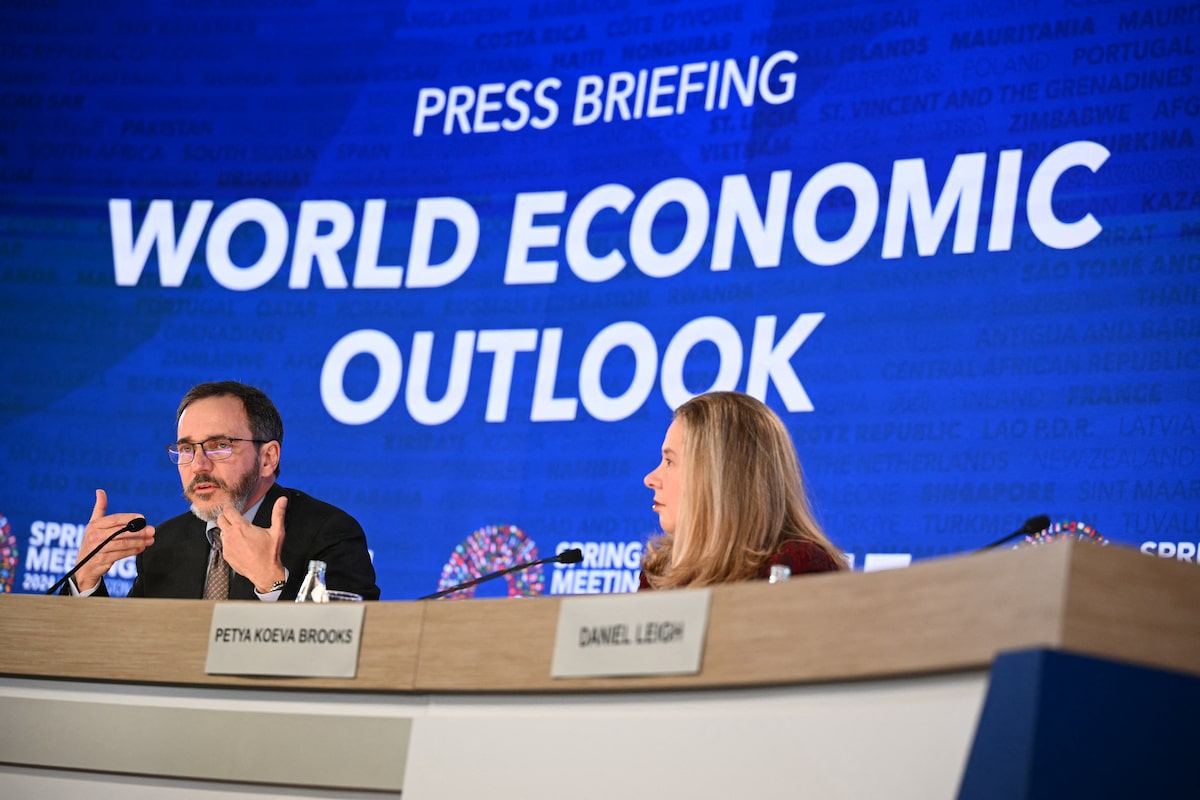Federal Reserve Chair Jerome Powell on Friday warned that more interest rate hikes are coming and are necessary to bring down record inflation, and would involve “some pain” for households and businesses.
Interest rates are just one of many factors economists take into account to determine whether the economy is getting better or worse, and who is most affected.
Housing market data, labor market numbers and how the GDP changes are also factors economists consider to determine whether we’re experiencing a recession or whether one is coming.
The PBS NewsHour’s Digital Anchor, Nicole Ellis, spoke to two economists – Diana Furchtgott-Roth, George Washington University adjunct economics professor and former chief economist at the Department of Labor, and Elise Gould, senior economist at the Economic Policy Institute – about how they interpret the current state of America’s economy and what they’re watching.
Watch the video in the player above.
Is the U.S. in a recession?
Using the most narrow definition, a recession is two consecutive quarters of falling Gross Domestic Product, or GDP, which measures the value of a country’s output of goods and services — more specifically, real GDP, which is GDP measured with inflation taken into account.
The reality is that whether we’re in a recession is the real GDP, plus a host of other factors. So while “we definitely saw from the first half of the year that GDP declined, which is our definition of recession, now we are in the third quarter and data from the third quarter are really good,” Furchtgott-Roth said. In other words, “We don’t know if we are in a recession right now.”
Furchtgott-Roth said she also looks at how much consumers are spending their money (consumption) and how much companies are investing their money domestically, in things like new offices or software (Gross Private Domestic Investment). Right now, she said, those trends make for an interesting dichotomy.
“The economy’s in a really interesting position right now,” Furchtgott-Roth said. “We have never had such a gap between gross domestic investment and consumption spending.”


Graph by Jenna Cohen.
Gould said there is no sign of a recession when looking at the labor market, either.
“I’m looking at a few different characteristics of the labor market. One is, what does job growth look like? And we have seen pretty strong job growth over the last few months, particularly the last month,” she said. “So there’s no signs there that we are in any kind of a recession.”
Unemployment is also an indicator that there is not currently a major recession happening.
Drops in the unemployment rate over the past year — coming in at a recent low of 3.5 percent in July — is also an indicator that there is not a major recession, according to Gould.


Graph by Jenna Cohen.
But the absence of a recession does not mean downturns are not possible or present. And any time the economy worsens, Gould said there are groups that feel the consequences more than others.
WATCH MORE: Inequality persists as the U.S. economy recovers from the pandemic
“The Black unemployment rate is on average twice as high as the white unemployment rate,” she said. “Similarly, young workers are hurt much more in recessions than older workers and more established workers.”


Graph by Jenna Cohen.
Why is inflation so bad right now, and will it get better?
Inflation refers to the general increase of cost across all goods and services over time. The most common measure of inflation is the Consumer Price Index (CPI), which hit a 40-year high of 9.1 percent in June, the highest increase since 1981. It fell to 8.5 percent in July.
“Inflation is coming from outside the labor market,” Gould said. “It’s coming from some of the supply chain bottlenecks that we saw as a result of the pandemic. They’re coming from higher energy prices, though we are seeing some of that coming down.”


Graph by Jenna Cohen.
Inflation has also worsened “because of excess federal spending and actions by the Federal Reserve that kept interest rates low for too long,” Furchtgott-Roth said.
One way to curb inflation is through interest rates; higher interest rates can curb consumption while lower interest rates encourage it. The Federal Reserve controls interest rates on the money it loans to banks, which then affects rates on consumer credit cards and adjustable rate mortgages.
WATCH MORE: Federal Reserve Chair Powell warns interest rates could increase ‘for some time’
The Fed has increased the interest rate by three-quarters of a percentage point in each of its last two meetings, Furchtgott-Roth said. Powell signaled in his speech at the Fed’s annual economic conference last week that interest rates are likely to continue to increase.


Graph by Jenna Cohen.
Economists like Gould worry about keeping up a steep pace of rate hikes.
“It’s kind of a blunt instrument in that way in terms of attacking inflation,” Gould said. “I can understand that we want to raise interest rates, but maybe we want to do it more slowly and more gradually. Continuing at this fast pace may have unintended consequences that can hurt workers that may lose their jobs.”
What’s next?
“I am optimistic that the economy is going to get better in the future and that we are going to have a mild recession, which is going to get inflation out of the economy, and then the economy is going to continue to increase,” Furchtgott-Roth said.
Gould agreed and pointed to the progress the economy has made since the COVID-induced recession in 2020.
“We’ve seen a tremendous bounce back from the pandemic recession because of the steps that policymakers took,” she said. “So we are now at the kinds of jobs numbers that we saw, in terms of payroll employment, where we were pre-pandemic. We still have a lot of work to do to absorb population growth, to get back to the kind of participation that we had before, but I think we are on track to get there.”










